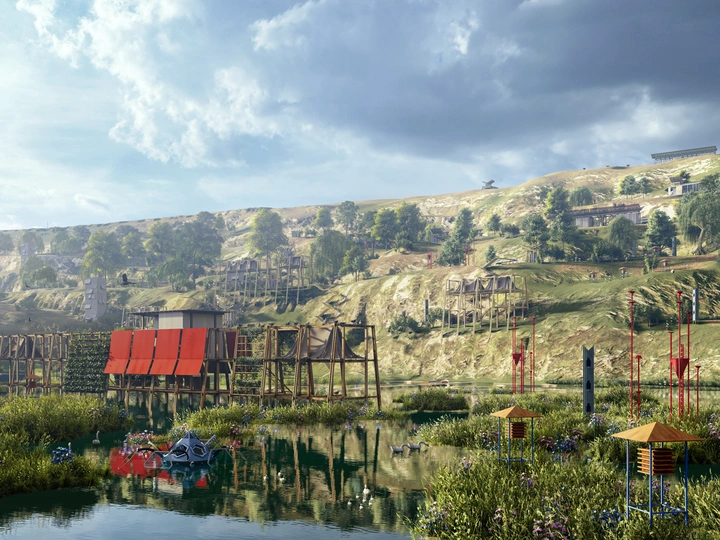The Common Void

Mariya Romanosova
Dogu Tonkur
Zofia Zatorska
Our group of four, was formed during a studio project 'Regeneration Typologies' as part of the Master's course in Architectural Typologies at the Technical University of Berlin. Each of us came to this program with our own baggage of knowledge and achievements - from participating in exhibitions such as the Venice Architecture Biennale and Milan Design Week, to long-lasting social activism and sustainable cities planning. Benefiting from our four different cultural backgrounds, along with diverse university and work experiences, we aim to understand how to move beyond human-centered ideology and establish new relationships between humans and nature. All of this converges in Berlin - an urban laboratory where architectural discourse exists closely intertwined with political, ecological, cultural, and social aspects.
Garzweiler II, a surface coal mine in North Rhine-Westphalia, is set to cease operations by 2030 in accordance with the German course towards sustainable energetics. The mining on site is responsible for 22% of the region's carbon dioxide emissions rated as 200 million tons yearly. The pumping out of the ground water impacted the soils of Netherlands and destroyed nearest wetland eco-systems. Through the time of the excavation works, 22 villages were destroyed. Currently the coal quarry appears as an post-apocalyptic canyon inhabited by colossal machines. Residents of nearby towns refer to Garzweiler as „The Void.“
The 32 km2 area, reaching a depth of 180m, will establish a new eco-system, creating “The Common Void”. In the modern world, against the backdrop of an energy crisis and military conflicts, it becomes evident that living in a constant clash between humans and nature, fighting for limited resources while causing destruction, can't be accepted anymore. The site serves as an extreme example of such a conflict, where relationships between all the actors - locals, activists, government and the energy company appears practically impossible.
The project follows the next principles:
In a narrative where there is no win or dominion within, there are no antagonist species, yet there is a collaborative understanding within nature. A co-existence will be sought for a common ground. In this project soil, water, flora and fauna are no longer considered as resources but as actors.
The Void will serve as a large web of care, where local knowledge will not only be produced but also shared with the visitor, will reshape future narratives. The future is not bound to the predominant “human development” thinking. The humancentric ideology is abandoned, the human-nature dichotomy is rejected.
The site becomes a pioneer for a new co-living model and the fact that it is regenerated from a damaged landscape of anthropocene, will carry the hope of a fruitful future.